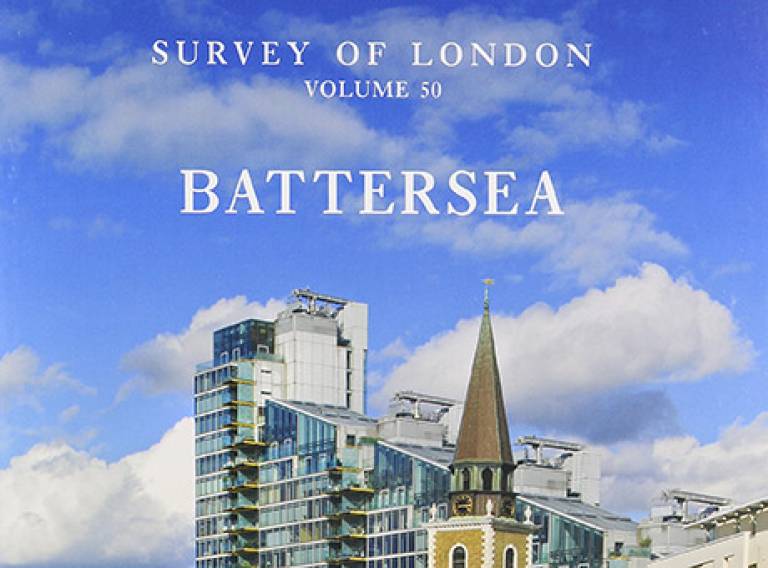Survey of London Vol. 49 & 50: Battersea - Andrew Saint & Colin Thom

11 February 2014
Along with Woolwich, Battersea was chosen by the Survey of London in part to redress a long-standing bias within the series in favour of districts north of the Thames.
While much of Battersea is quintessential Victorian suburbia, it is a large and strikingly varied parish, cut about by innumerable railway lines to and from Clapham Junction. Its industrial riverside continues a transformation that began 50 years ago.
From the early seventeenth century to the early nineteenth Battersea was best known for market gardening, and supplying vegetables, fruit and flowers to the London markets. The village nucleus itself was by the river, close to the parish church, and there was a scattering of industry along the riverside.
Beyond the Thames lay marshland, then market gardens and small villas stretching back to Clapham and Wandsworth Commons. From about 1840, railway lines, industry and large-scale housing erupted, taking the population from 4,000 to 120,000 in half a century. The handsome Battersea Park was laid out just in time to prevent the whole of the area beside the Thames being engulfed by building.
Social conditions in the north of the parish were severely impoverished, while after 1870 street after street of better suburban houses rose within reach of the commons. The criss-cross of different railway lines and their works was exceptionally tangled, leaving the topography of northern Battersea permanently scarred, though it is still marked by memorable sites such as Battersea Power Station and Clapham Junction.
 Close
Close

